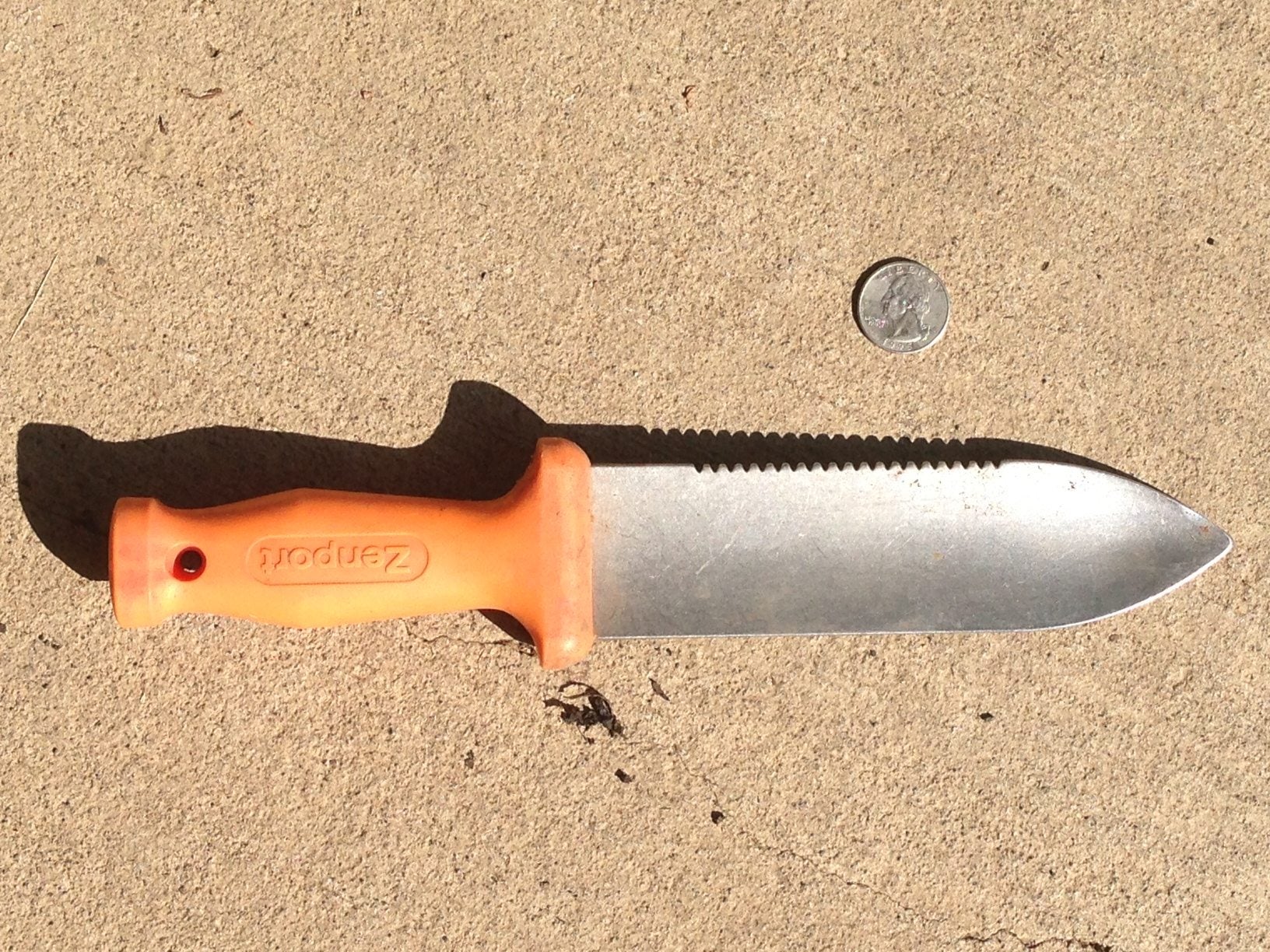Japanese Digging Knife – Using A Hori Hori Knife For Gardening


The hori hori, also known as the Japanese digging knife, is an old gardening tool that’s getting a lot of new attention. While most western gardeners may not have heard of it, it seems that everyone who does, falls in love. Keep reading to learn more about using a hori hori knife for gardening and other hori hori knife uses.
What is a Japanese Digging Knife?
“Hori” is the Japanese word for “dig” and, coolly enough, “hori hori” is the Japanese onomatopoeia for the sound that digging makes. While it’s often used for digging, this Japanese gardener’s knife has so many other uses that it’s best to think of it as a multi-purpose tool.
There are a few different styles of hori hori available commercially, though the difference tends to be in the handle. The more traditional styles have bamboo or wooden handles, but it’s easy to find rubber and plastic handles too. The basic shape of the blade itself is pretty much always the same-- a length of metal that tapers to a point, with one sharp side and one serrated side. The hori hori is relatively short, usually about a foot (31 cm.) from end to end and meant to be wielded one-handed.
Hori Hori Knife Uses
It is because of their size and shape, hori hori knives are very versatile. When using a hori hori knife, it’s best to hold it in one hand and treat it as something like a cross between a trowel, a saw, and a knife.
- Its long and narrow shape makes it perfect both for loosening soil for transplants and for dislodging soil from root crops when they’re ready for harvest.
- Its point can be dragged across the soil to make seed troughs.
- Its smooth edge can slice through small weeds, stems, twine, and bags of fertilizer.
- Its serrated edge is good for tougher jobs, like cutting through roots and small branches.
Gardening tips, videos, info and more delivered right to your inbox!
Sign up for the Gardening Know How newsletter today and receive a free copy of our e-book "How to Grow Delicious Tomatoes".

The only child of a horticulturist and an English teacher, Liz Baessler was destined to become a gardening editor. She has been with Gardening Know how since 2015, and a Senior Editor since 2020. She holds a BA in English from Brandeis University and an MA in English from the University of Geneva, Switzerland. After years of gardening in containers and community garden plots, she finally has a backyard of her own, which she is systematically filling with vegetables and flowers.